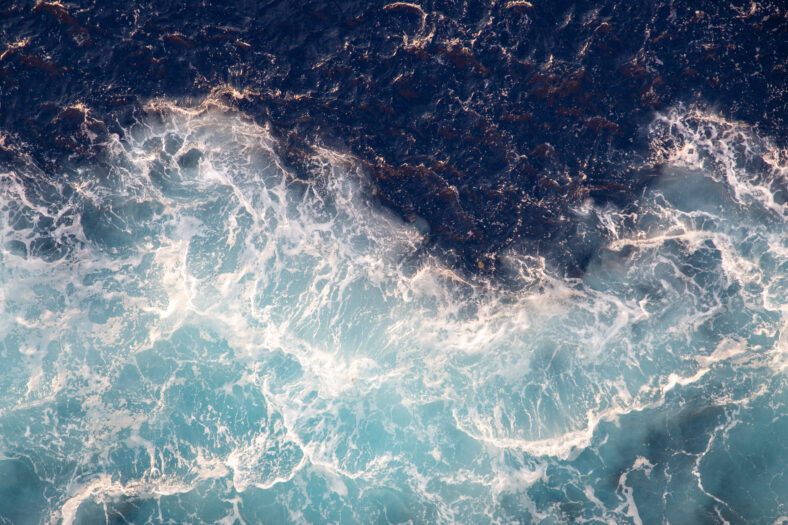Earth Had Green Oceans Billions Of Years Ago, And Now They Could Be Going Green Again

Billions of years ago, our planet did not have the deep blue oceans we admire today. Instead, they were actually a striking shade of green due to the chemical composition of early seas and ancient microbial life. Now, the Earth’s oceans may be turning green again.
Researchers from Nagoya University in Japan used a variety of environmental factors to create a simulation of Earth billions of years ago.
Back then, the atmosphere had more vapor and carbon dioxide than it does today, which made it acidic. As a result, land eroded more quickly, causing vast amounts of iron to be washed into the sea.
Depending on the iron’s ionic charge, the water appeared brown, gray, or green. The simulation showed that the iron was triple-charged, meaning that it would have given the ocean water a distinctive green tint.
Iron hydroxide absorbs blue light, and water absorbs red light, leaving only green light to be reflected back into the atmosphere.
At the same time, cyanobacteria, some of the earliest photosynthetic organisms in the water, used chlorophyll to convert sunlight into energy.
They also had pigments that absorbed light but were not absorbed by the green water, making it even greener. According to the research team, this period of green oceans lasted from approximately three billion years ago to 600 million years ago. During that time, the planet’s oceans were larger, so Earth would have looked green from a distance.
Over time, the cyanobacteria in the sea would have been using the sun’s energy to split water molecules into hydrogen and oxygen. Both the gases would have been released into Earth’s atmosphere.
As it evolved and more complex life began to emerge around 600 million years ago, the chemistry of the oceans shifted.

Sign up for Chip Chick’s newsletter and get stories like this delivered to your inbox.
The oxygen became dominant and reacted with the iron in the seawater, eventually leading to the deep blue shade we know today.
In the hundreds of millions of years since then, Earth’s oceans have remained blue. But scientists say that is now changing.
Five years ago, it was predicted that half of the world’s oceans could turn green by the end of this century due to climate change and rising ocean temperatures.
In 2023, satellite data confirmed that the color change was already starting to happen. Within the past two decades, 56 percent of the world’s oceans have become greener. The cause of it is phytoplankton, which are microscopic plant-like organisms that are at the bottom of the oceanic food chain.
Phytoplankton populations are affected by nutrient levels, ocean temperature, and carbon dioxide concentrations.
These conditions are changing as the planet continues to warm up, creating massive blooms of phytoplankton across the oceans. They alter how light is absorbed and reflected, resulting in the return of greener waters.
It is unclear whether this shift will be temporary or long-term, but scientists will keep a close eye on the oceans. The study was published in Nature Ecology & Evolution.
More About:News